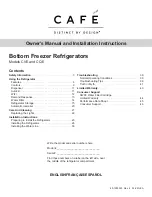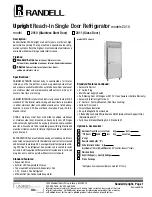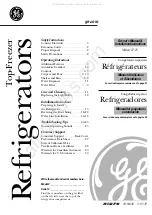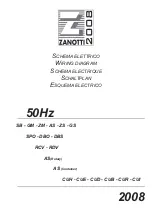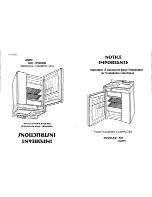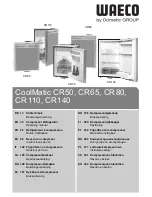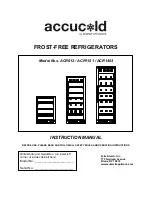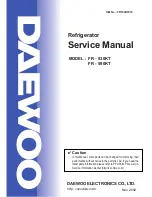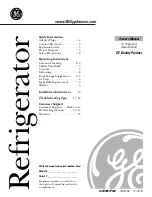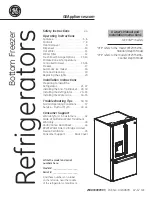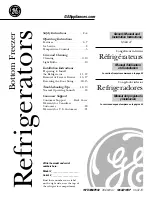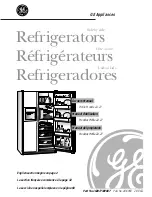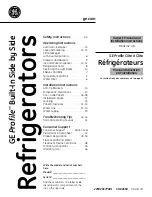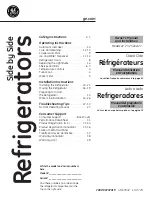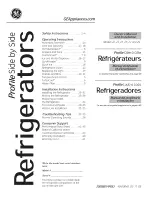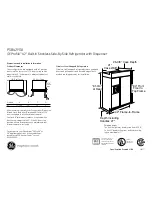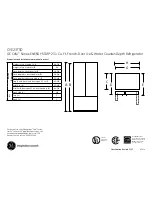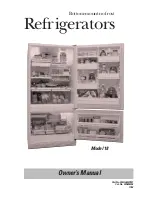
IMPORTANT SAFETY INSTRUCTIONS
It is most important that this instruction book should be retained with the appliance for future
reference. Should the appliance be sold or transferred to another owner, or should you move house and
leave the appliance, always ensure that the book is supplied with the appliance in order that the new
owner can be acquainted with the functioning of the appliance and the relevant warnings.
These warnings are provided in the interest of safety. You must read them carefully before installing or
using the appliance.
General Safety
■
This appliance is designed to be operated by
adults. Children should not be allowed to tamper
with the controls or play with the product.
■
It is dangerous to alter the specifications or modify
this product in any way.
■
Before any cleaning or maintenance work is
carried out, be sure to switch off and unplug the
appliance.
■
This appliance is heavy. Care should be taken
when moving it.
■
Ice lollies can cause frost burns if consumed
straight from the appliance.
Service / Repair
■
Any electrical work required to install this
appliance should be carried out by a qualified
electrician or competent person.
■
This appliance should be serviced by an
authorised Service Centre, and only genuine
spare parts should be used.
■
Under no circumstances should you attempt to
repair the appliance yourself. Repairs carried out
by inexperienced persons may cause injury or
more serious malfunctioning. Refer to your local
Service Centre, and always insist on genuine
spare parts.
Use
■
The domestic refrigerators and freezers are
designed to be used specifically for the storage of
edible foodstuffs only.
■
Frozen food must not be re-frozen once it has
been thawed out.
■
Manufacturers’ storage recommendations should
be strictly adhered to. Refer to relevant
instructions.
■
The inner lining of the appliance consists of
channels through which the refrigerant passes.
If these should be punctured this would damage
the appliance beyond repair and cause food loss.
DO NOT USE SHARP INSTRUMENTS to scrape
off frost or ice. Frost may be removed by using the
scraper provided. Under no circumstances should
solid ice be forced off the liner. Solid ice should be
allowed to thaw when defrosting the appliance.
See defrost instructions.
■
Do not place carbonated or fizzy drinks in the
freezer as it creates pressure on the container,
which may cause it to explode, resulting in
damage to the appliance. Do not use a
mechanical device or any artificial means to speed
up the thawing process other than those
recommended by the manufacturer. Never use
metal objects for cleaning your appliance as it may
get damaged.
Installation
■
Care must be taken to ensure that the appliance
does not stand on the electrical supply cable.
Important: if the supply cord is damaged, it must
be replaced by a special cordo or assembly
available from the manufacturer or its service
agent.
■
There are working parts in this product which heat
up. Always ensure that there is adequate
ventilation as a failure to do this will result in
component failure and possible food loss. See
installation instructions.
■
Parts which heat up should not be exposed.
Wherever possible the back of the product should
be against a wall.
■
If the appliance has been transported horizontally,
it is possible that the oil contained in the
compressor flows in the refrigerant circuit. It is
advisable to wait at least two hours before
connecting the appliance to allow the oil to flow
back in the compressor.
Environment Protection
■
This appliance does not contain gasses which
could damage the ozone layer, in either its
refrigerant circuit or insulation materials. The
appliance shall not be discarded together with
the urban refuse and rubbish. Avoid damaging
the cooling unit, especially at the rear near the
heat exchanger. Information on your local
disposal sites may be obtained from your
municipal authorities.
■
The materials used on this appliance marked
with the symbol
are recyclable.
3
Summary of Contents for ZI 1450
Page 1: ...2222741 42 INSTRUCTION BOOKLET REFRIGERATOR ZI 1450 ...
Page 12: ......













